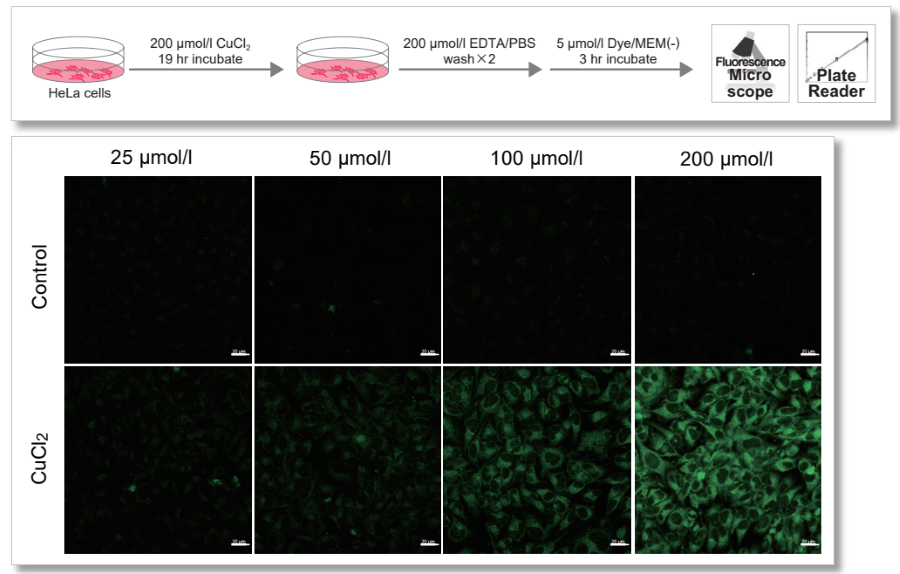Role of Copper Ions
Copper is known as a transition metal that acts as the active centre of enzymes that control vital processes such as respiration and metabolism, although it is only present in trace amounts in the body. Specifically, copper assists binds to superoxide dismutase1 (SOD1), thereby scavenging reactive oxygen species (ROS). Copper thus plays an important role in maintaining life.
In recent years, copper has also been the focus of research into cell death. While much research has been done on ferroptosis, a relatively new pathway of cell death initiated by iron (II) ions, a new pathway of cell death initiated by copper (I) ions, distinct from ferroptosis (cuproptosis), has been discovered1). CuprosGreen is a fluorescent probe that selectively reacts with intracellular copper (I) ions and emits fluorescence. Its membrane permeability allows live-cell imaging of copper (I) ions.
1) Tsvetkov et al., Science, 2022, 375, 1254–1261
For imaging with fluorescence microscopy and quantifying with a plate reader
In HeLa cells, we evaluated changes in intracellular CuCl2 addition (which is reduced intracellularly to monovalent copper ions) and found that CuCl2 addition increased intracellular monovalent copper ion levels compared to control by both confocal microscopy and plate reader detection methods.








